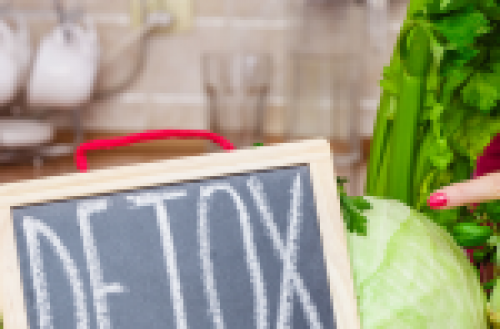How to Support Natural Detoxification Pathways

In the intricate web of our bodily functions, the process of detoxification and elimination plays a crucial role in maintaining overall well-being. Our body employs various pathways to rid itself of toxins, ensuring that we remain vibrant and healthy. Let’s delve into the key elimination pathways – the liver, kidneys, colon, lymphatic system, and skin – and understand how to support them for optimal functioning.
The Liver: Guardian of Detoxification
The liver stands as a formidable fortress in our body’s defense against toxins. Acting as a filtration system, the liver metabolizes and neutralizes harmful substances before they can wreak havoc. However, if the elimination pathways are obstructed, toxins may be recirculated, leading to a cascade of unpleasant symptoms.
The Kidneys: Filtering and Balancing
As the primary filtration system for the blood, kidneys work diligently to eliminate waste and excess fluids. Adequate hydration is key to supporting kidney function, ensuring that toxins are efficiently flushed out.
The Colon: Cleansing the System
The colon, or large intestine, is crucial in eliminating solid waste. A healthy fiber-rich diet promotes regular bowel movements, preventing the reabsorption of toxins. Likewise, taking certain binders to grab ahold of undesirable toxins can help promote this detoxification pathway.
The Lymphatic System: Fluid Balance and Immune Support
The lymphatic system is a drainage system that removes cellular waste and toxins. Lymphatic massage and regular movement support this intricate network, preventing congestion and promoting optimal function. Be sure to find a qualified lymphatic therapist near you who is MLD Certified (40 hours) or is a Certified Lymphedema Therapist.
Deep Tissue Massage Does Not Promote Detoxification
Contrary to popular belief, deep tissue massage is not a detoxifying style of massage like lymphatic massage. Quite the opposite, deep tissue massage breaks down muscle tissue and creates more work for the lymphatic system to remove. If you are interested in a truly detoxifying session, go for the light touch of Manual Lymphatic Drainage. (Note: There is a fad currently happening in the US called “Brazilian Lymphatic Massage.” This is entirely a marketing ploy and should not be mistaken for the real lymphatic work done by therapists trained at an accredited school.)
The Skin: Sweating it Out
Our skin, the body’s largest organ, is a major player in eliminating sweat. Engaging in regular exercise, utilizing infrared saunas, and practicing hot and cold showers encourage sweating, facilitating the removal of toxins.
Herxheimer Reactions: Recognizing Detox Symptoms
When elimination pathways are clogged, herxheimer reactions may occur, manifesting as skin rash, acne, headache, nausea, constipation, diarrhea, bloating, and fatigue. Recognizing these symptoms is crucial to adjusting your detox protocol.
Opening Elimination Pathways: A Holistic Approach
To open up your detox and elimination pathways, incorporate the following practices into your routine:
-
Sweat it Out: Regularly exercise and consider the benefits of infrared sauna sessions.
-
Castor Oil Packs: Apply castor oil packs to the lower stomach or liver to support liver function.
-
Dry Body Brushing: Stimulate lymphatic drainage by incorporating dry body brushing into your skincare routine.
-
Hot and Cold Showers: Alternate between hot and cold water in your shower to boost circulation and detoxification.
-
Lymphatic Massage: Treat yourself to lymphatic massage sessions to support the lymphatic system.
-
Rebounding: Bounce your way to detoxification with rebounding exercises that stimulate lymph flow.
-
Liver and Gallbladder Support: Consider herbal supplements to support the liver and gallbladder.
-
Energy and Mitochondrial Support: Prioritize overall energy and mitochondrial health for optimal cellular function.
-
Adequate Sleep: Ensure you get at least 7 hours of quality sleep each night to allow your body to repair and rejuvenate.
Adopting these practices is not only beneficial for detoxification but also forms the foundation of a healthy lifestyle. Whether or not you’re undergoing specific detox protocols, nurturing your elimination pathways is a holistic approach to long-term well-being. By supporting your body’s natural processes, you empower it to thrive in the face of life’s challenges.
Supporting Natural Detox Pathways Through Diet
A 21-day detox diet is designed to support the body’s natural detoxification pathways, primarily those involving the liver, kidneys, and digestive system. These organs are responsible for filtering and eliminating toxins that accumulate from everyday exposures, such as air pollution, processed foods, household chemicals, and environmental pollutants. The diet typically includes nutrient-dense, whole foods rich in antioxidants, fiber, and essential vitamins and minerals, which play a critical role in enhancing the body’s detoxification processes.
One of the key components of detoxification is the liver’s ability to metabolize and neutralize toxins, a process that occurs in two phases. During a detox diet, foods like leafy greens, cruciferous vegetables (such as broccoli and kale), and citrus fruits help stimulate both phases of liver detoxification. These foods provide compounds like sulforaphane and glutathione precursors, which aid in neutralizing harmful substances and converting them into water-soluble compounds that can be excreted through urine or bile. Fiber-rich foods, such as whole grains and legumes, further support this process by promoting regular bowel movements, helping to eliminate waste products and preventing the reabsorption of toxins from the colon.
Detoxification is important due to the increasing number of toxic exposures we face in modern life. Toxins from pesticides, heavy metals, plastics (like BPA), and even cosmetic products can accumulate in our bodies, potentially leading to inflammation, hormonal imbalances, and impaired cellular function. By supporting the body’s detox pathways with a 21-day detox diet, individuals may experience benefits like improved digestion, clearer skin, enhanced energy levels, and reduced inflammation. This diet helps reduce the toxic load on the body, allowing it to function more efficiently and maintain optimal health in the face of constant environmental challenges.



